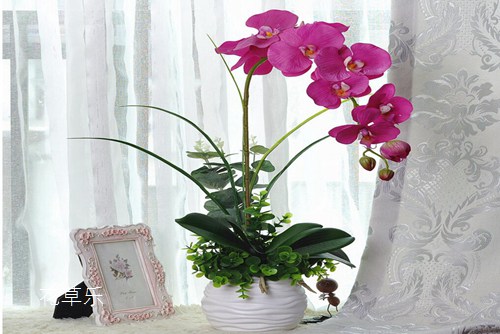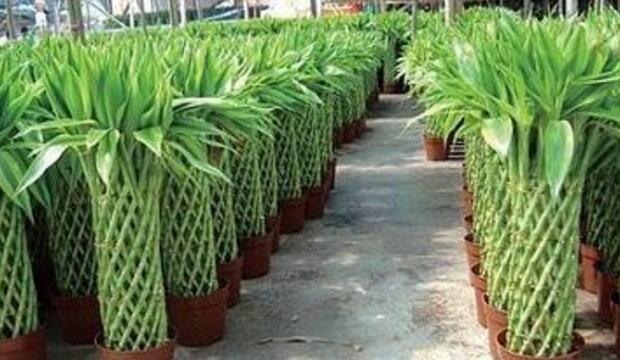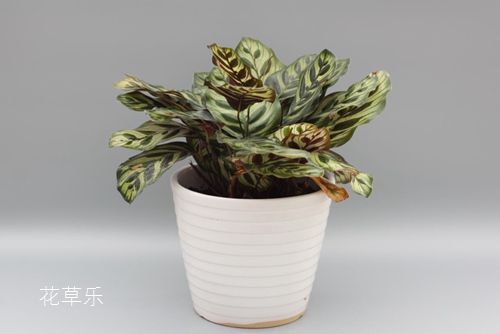How to raise Phalaenopsis? Phalaenopsis breeding method
Phalaenopsis is also called Phalaenopsis. Is one of the most widely cultivated and popular species of Orchidaceae. Its flower shape is plump and beautiful, the color is bright, the flowering period can be up to several months, the growth potential is strong, easy to cultivate. There are many kinds of designs and colors, including pure white, purple, white red lips, yellow red spots, white red spots, white red stripes and so on. The flower language of different colors has different symbolic meaning and flower meaning of Phalaenopsis. Many people find Phalaenopsis difficult to serve. How to keep Phalaenopsis? Below, Hua Cao Le shares with you the breeding methods and points for attention of Phalaenopsis.
How to raise Phalaenopsis? Culture methods of Phalaenopsis

Culture methods of Phalaenopsis
1. Light: Phalaenopsis prefers shade. Put it indoors where there is scattered light to avoid direct sunlight. But before and after flowering, proper light can promote Phalaenopsis to blossom and blossom for a long time.
two。 Soil: Phalaenopsis has higher requirements for soil, which needs to be breathable, rot-resistant, slightly acidic and permeable. Generally choose pine needles, peanut shells, bark silk, clay balls and other materials as the substrate for breeding Phalaenopsis. Phalaenopsis likes the breathable growth environment, it is recommended to choose porous shallow pots when choosing flowerpots, and plastic pots or ceramic pots with a height less than the diameter of the pots are the best.
3. Temperature: it is best to control the temperature before 25-28 degrees during the day and 18-20 degrees at night. When the summer temperature is higher than 32 degrees or less than 15 degrees, Phalaenopsis will directly enter the semi-dormant state, so it is necessary to prevent high and low temperatures.
4. Watering: Phalaenopsis watering can be used for watering, watering to the bottom of the basin is good to avoid watering too much water. During the growth of Phalaenopsis. Once the frequent occurrence of water shortage will cause the leaves yellowing, and it is difficult to recover. Watering should not allow the heart of the orchid leaf to accumulate water. You can't sprinkle water on the leaves in winter. Generally, watering should be carried out on a sunny morning, and the water temperature should be close to room temperature. When the indoor air is dry, sprayers can be used to spray directly to the leaves, and water spray can not be sprayed on the flowers during flowering.
5. Ventilation and shade: Phalaenopsis is delicate, choosing a ventilated environment will be more conducive to its growth. The muggy environment is not suitable for breeding Phalaenopsis, especially in summer in the south, pay attention to shading Phalaenopsis. Phalaenopsis is an epiphytic orchid with a sexual preference for semi-yin. The temperature is low in winter, so it should be ventilated at noon, but the tuyere should not be blown directly to the orchid plant. In spring and autumn, we should pay attention to protect orchids from light.
6. Fertilization: the principle should be less fertilization and light fertilizer. The growth period of orchid plant is from June to September, and it is necessary to fertilize the orchid plant once a week. Suitable fertilizers for Phalaenopsis: foliar fertilizer, potassium dihydrogen phosphate, cake fertilizer fermented with water, special fertilizer for orchids, etc. During the growing period, Phalaenopsis can be fertilized alternately with foliar fertilizer and potassium dihydrogen phosphate. Or irrigate the fertilizer with the cake fermented by adding water. The temperature is high in summer, so we should stop fertilizing the orchid plant. The number of fertilizers began to be reduced in autumn.
7. Conservation: Phalaenopsis is cultivated indoors. Due to temperature, humidity and other factors, the leaves of the orchid plant grow only 1-2 in a year. Due to the limitation of temperature and humidity, Phalaenopsis grows singly on the top, and the flower bud grows between the two leaves. When the orchid plant grows flower bud, the indoor temperature is controlled at 18 to 20 degrees. After about 120 days of maintenance, Phalaenopsis will bloom. The flower stem to be born can be supported in advance in the flowerpot to prevent the flower stem from lodging. The flower stem needs to be fixed for many times in the process of growth to prevent the flower stem from breaking. When each bud in the pot grows well, do not change the direction of the fragrance pot, lest the flowers of Phalaenopsis bloom uneven and affect the viewing. During the 4-month flowering period, keep the room ventilated and warm and keep the temperature between 15 and 18 degrees. The flowering period is around the Spring Festival, and proper cooling can prolong the viewing time. The night temperature during flowering should be controlled between 13 ℃-16 ℃, but not less than 13 ℃. What should be paid attention to during flowering is gray spot, mainly due to not paying attention to the water droplets on the petals, or other diseases, which hinder the ornamental value of the flowers. Therefore, do not spray fat water on the petals.
8. Change pots: Phalaenopsis change pots once every year in late spring and early summer. It can prevent Phalaenopsis from growing poorly and leading to death caused by matrix decay. Phalaenopsis likes highly ventilated soil.
Time: 2019-04-29 Click:
- Prev

How to raise rich bamboo, the culture methods and matters needing attention of rich bamboo cages
The rich bamboo cage is made of dozens of rich bamboos, and its meaning of wealth is self-evident, and there is also the implication of rising, blooming and peaceful bamboo. The rich bamboo cage likes to be warm and humid, shade the environment and scatter light. Rich bamboo has the function of disinfection, which can effectively absorb waste gas, produce oxygen and improve air quality.
- Next

How to raise peacock bamboo taro the culture method of peacock bamboo taro
Peacock bamboo taro is also known as five-color kudzu Yujin. Peacock bamboo taro plant shape is regular, the leaf is full of wonderful and exquisite markings, unique metal luster, brown patches like peacocks open screen, its colors are fresh, gorgeous and soft. Peacock bamboo taro prefers semi-shade and high temperature and humid environment, and is not resistant to cold. The suitable temperature for growth is 20 Mel 30 ℃.
Related
- Fuxing push coffee new agricultural production and marketing class: lack of small-scale processing plants
- Jujube rice field leisure farm deep ploughing Yilan for five years to create a space for organic food and play
- Nongyu Farm-A trial of organic papaya for brave women with advanced technology
- Four points for attention in the prevention and control of diseases and insect pests of edible fungi
- How to add nutrient solution to Edible Fungi
- Is there any good way to control edible fungus mites?
- Open Inoculation Technology of Edible Fungi
- Is there any clever way to use fertilizer for edible fungus in winter?
- What agents are used to kill the pathogens of edible fungi in the mushroom shed?
- Rapid drying of Edible Fungi

